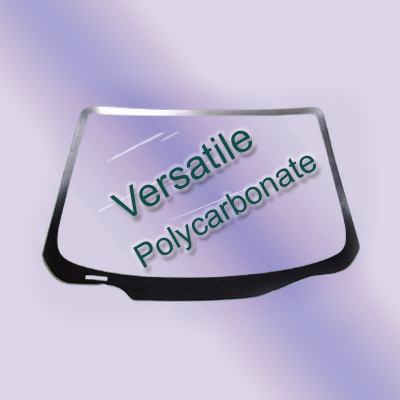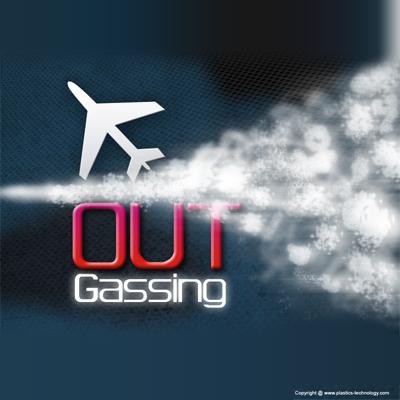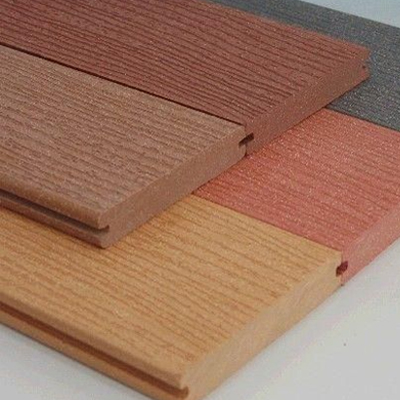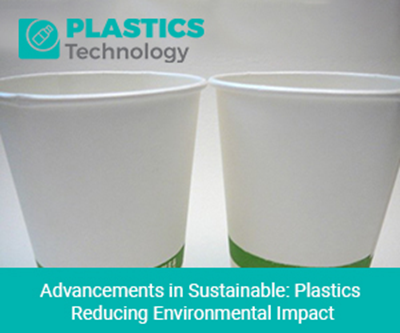Versatile Polycarbonate in Different Industries

Polycarbonate is a versatile tough plastic that is used for a variety of applications ranging from bulletproof windows to compact disks. It is known for its unbeatable strength at light weight and the unbreakable quality made industries use it in wide purposes. Polycarbonate is just one-third the weight of acrylic and one-sixth as heavy as glass. Though, polycarbonate is more expensive compared to both acrylic and glass, industries are not compromising in its usage in the product manufacturing or operations.
Polycarbonate discovery dates back to 1898 by Einhorn, a German chemist, who observed the formation of an insoluble, infusible solid, while endeavoring to prepare cyclic carbonates by reacting hydroquinone with phosgene. Followed by this, Bischoff and Hedenström observed similar cross-linked, high-molecular-weight Polycarbonate in the year 1902. Bayer laboratories produced linear thermoplastic Polycarbonate of high molecular weight till the year 1953 and later in the year 1960, Bayer and General Electric has come up with an independent development of Polycarbonate as commercial production.
As one of the most widely used engineering thermoplastics, Polycarbonate is the fastest growing engineering plastics as new applications are defined and global demand exceeds 1.5 million tons. Its hard, tough, strong, stiff, and transparent qualities can maintain rigidity up to 140°C and toughness down to -20°C or special grades even lower. So, the material is thermally resistant up to 135°C and rated as slow burning with its flame retardant grades which passed several severe flammability tests. Polycarbonate is available at different grades depending on the application and processing method.
Polycarbonate Versatile Application
The recent industrial application challenges and changes have made Polycarbonate an increasingly commercial material. All the industries, right from aeronautics to food industry uses Polycarbonate.
Polycarbonate in Electricals & Electronics
The electrical and electronics of hosting applications in the business machine and telecommunications market followed by optical media market that is comprised of computer and audio compact discs at a wide range of application for PC which is followed by an assortment of sheeting and glazing applications. The demand for spike temperature resistance, high service temperature, ductility and toughness in thin sections, and non flammability features in the material being used in electrical and electronics increased the demand for polycarbonate since it is capitalized on its collective safety features.
In the year 2011, consumer electronics accounted for 20% of end-use of polycarbonates and optical media (CDs/DVDs) at 18%. This is only because of the polycarbonates fulfilling quality of all safety requirements such as heat resistance and electrical insulation. While, Polycarbonates light weight and impact- and shatter-resistant qualities make it perfect for housing cell phones, computers, electrical chargers, fax machines, pagers, connectors, battery boxes and others by withstanding the bangs, accidental drops and scratches that may occur in everyday use.
Polycarbonate in Construction Materials
In construction, plastics begin where other materials role stops and the industry stood as the second largest consumer with 18% of polycarbonates consumption, like sheet and film sector for flat or curved glazing, and sound walls. A double walled extruded polycarbonate sheet called Lexan Dripgard, a SABIC Innovative Plastics product offers UV protection thermal insulation, high light transmission, impact strength, long-term weather ability and lightweight having resistance to condensate build-up. While the polycarbonate products for construction purpose is reliable for years together with supported warranties from manufacturers.
Polycarbonate roofs are the current trend in building, walkways and other roofing because of its UV protection feature. This is the result of UV stabilizers in polycarbonate to help protect the material from the Sun and sustain for a longer period of time.
Polycarbonate in Automotives and Aerospace
The typical application of polycarbonate products in automotives is in automotive lighting, head lamp lenses, interior cladding, dashboards, exterior parts (bumpers, body panels). While the additional applications are protective shields, indoor and outdoor signs, architectural glazing, shelves, fixtures, skylights, aerospace and mass transit interior surfaces and product displays. The key advantages for these industries from polycarbonates are
- »Exceptional impact strength over other non-metallics and provides a key to long enclosure life.
- »Now polycarbonate is being easily fabricated and reduced the relatively high cost of injection molding tooling.
- »Outstanding clarity in polycarbonate with different range of grades.
- »The high flame retardancy and wide temperature ranges made the material dynamic to adapt different climatic conditions and circumstances.
The appliances and automotive industries stood at third place with 12% of global polycarbonate consumption in the year 2011. While, aerospace and defence industries are polycarbonate consumers because of its high transparent, soft and ductile features even at thick ranges. As a bullet proof glass, the soft feature of polycarbonate is able to deform and stretch by taking the energy from the moving bullet.
Polycarbonate in Consumer Goods Industry
Consumer Goods Industry is not only about the product, but also about its packaging. So, polycarbonate is a highly utilized product at different ranges and kinds for the product manufacturing, as well as the packaging. Power tools, baby bottles, furniture, water dispensers, garden equipment, sporting goods and medical applications are few examples in this category. The reliability on polycarbonate is increased with the materials durability, cost effectiveness, and its appearance.
Polycarbonate in Medical Market
During 1960s “Bisphenol A” polycarbonate is commercially available and being used in medical devices since that time. The broad range of polycarbonates physical properties replaced glass or metal in many products and offers an unusual combination of strength, rigidity, and toughness that helps avoid potentially life-threatening material failures in medical area. Renal Dialysis, Cardiac Surgery Products, Surgical Instruments, IV Connection Components and other important medical equipment and many other medical areas use polycarbonate. The lipid-resistant grades, high-temperature grades, high-radiation grades in polycarbonate are highly used in the medical area based on the demand of current living style and material trends.
In medical field, the biocompatibility features of polycarbonate grades with any material used in direct or indirect contact with patients provides glasslike clarity, a critical characteristic for clinical and diagnostic settings in which visibility of tissues, blood, and other fluids is required. These polycarbonate grades testing standards such as ISO 10993-1 and USP Class VI are in place to maintain the standards and regulations.
Aetna Plastics Corporation manufactures a wide range of polycarbonate material for different industries on the name of Makrolon and Lexan. The range covers food grade, abrasion-resistant, flame-inhibiting, general purpose, machine grade, optical grade, SunLife, Hygard and other varieties of polycarbonates.
According to an IHS Chemical 2012 World Polycarbonate and ABS Analysis report, world demand for polycarbonate is expected to grow at an average rate of slightly less than 5% during the next five years, reaching around 4.5 million metric tons by the end of year 2016. U.S. demand for the product was estimated at 360 thousand metric tons in 2011. China rising as the major demand driver for polycarbonate in the world, Asia stands first in demand of polycarbonate and Europe being the second largest consumer.
Polycarbonate occupies a unique niche in all the industries. So, engineers and industries are on the hands-on work to tap the polycarbonate market globally. Its high time for industries to adapt polycarbonate and as well produce polycarbonate to not only reach the untapped market but also to equip material that is competitive over other materials prevailed for the same purposes and applications.



